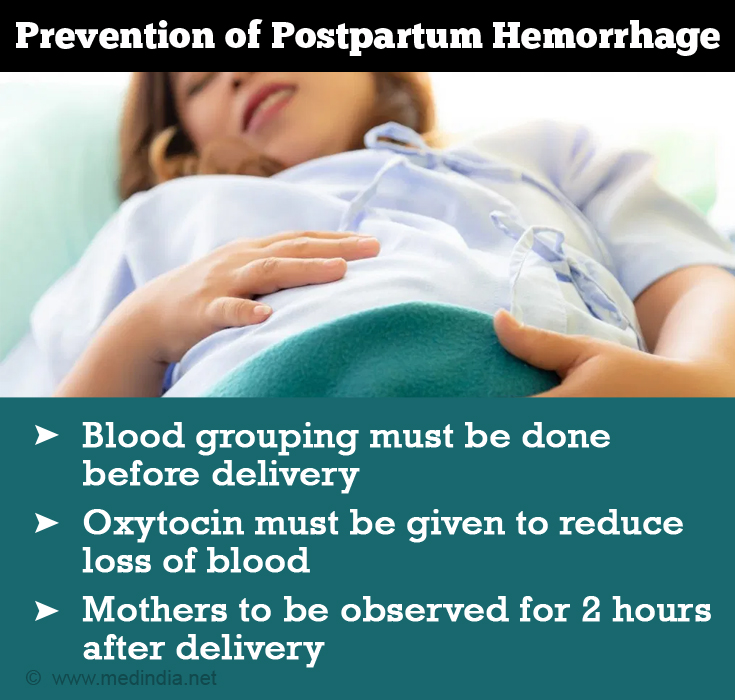Postpartum hemorrhage (PPH) is generally considered as an obstetrical emergency and is a major cause of maternal morbidity and mortality in the world. The risk of death of these mothers is low in high-income group countries (1 in 100,000 deliveries) and high in low-income countries (1 in 1000 deliveries).(1✔) It is estimated that every year 3% to 5% of women who deliver babies will experience postpartum bleeding. Many of these events are preventable but are the cause of 25% of maternal deaths worldwide.(2✔)
If the diagnosis is done on time and corrective measures are taken, PPH can be prevented and maternal mortality avoided.
The WHO definition of postpartum hemorrhage (PPH) is blood loss greater than 500 ml after labor.
Based on the amount of blood loss, it can be -
Minor – or less than one - liter blood loss
Major – More than one - liter blood loss
Severe – Over two liters blood loss
PPH can be of two types:
The causes of Post-Partum Hemorrhage include:

The foremost sign of PPH postpartum hemorrhage is hemorrhage from vagina after delivery.
Usually, the bleeding is slow trickle from the vagina.
Rarely, it is concealed as vulvovaginal or broad ligament hematoma (i.e. collection of blood outside blood vessels).
There is associated anemia in severe cases along with symptoms of shock due to decreased blood volume called hypovolemic shock. Low blood pressure and high pulse rate are seen in severe cases.(5✔)
History of bleeding along with physical examination where the uterus can be easily felt in the lower abdomen is enough to come to a diagnosis. If in shock, the blood pressure will be low and pulse rate would be high. A further blood test will reveal a low hemoglobin.

The uterus is well contracted in cases of trauma as the cause of bleeding whereas, the uterus is flabby and becomes hard on massaging in cases the cause is decreased uterine muscle tone.
There are various steps in the management of postpartum hemorrhage.
In case of placental site bleeding:

In the case of traumatic bleeding, the site of trauma is sutured under general anesthesia after the placenta has been expelled.
Blood transfusion may be necessary depending on the hemoglobin and the state of the patient.
Ensure that the cause of PPH is taken care and addressed.
In cases where the bleeding is persistent and refractory, the use of tranexamic acid is advised.(6✔)
Postpartum hemorrhage can be prevented by various methods: the first being reducing the risk factors for developing anemia, i.e., by ensuring that hemoglobin levels of the mother are greater than 10 g/dL so that she can withstand blood loss.
Blood grouping must be done before delivery to ensure swift transfusion if and when required.
Placental localization must be done using ultrasonography and in complicated cases using MRI scans.
High-risk cases must be delivered in a well-equipped hospital.
Postpartum hemorrhage is a major contributing factor to maternal mortality. It must be controlled by taking various precautionary measures during delivery.
